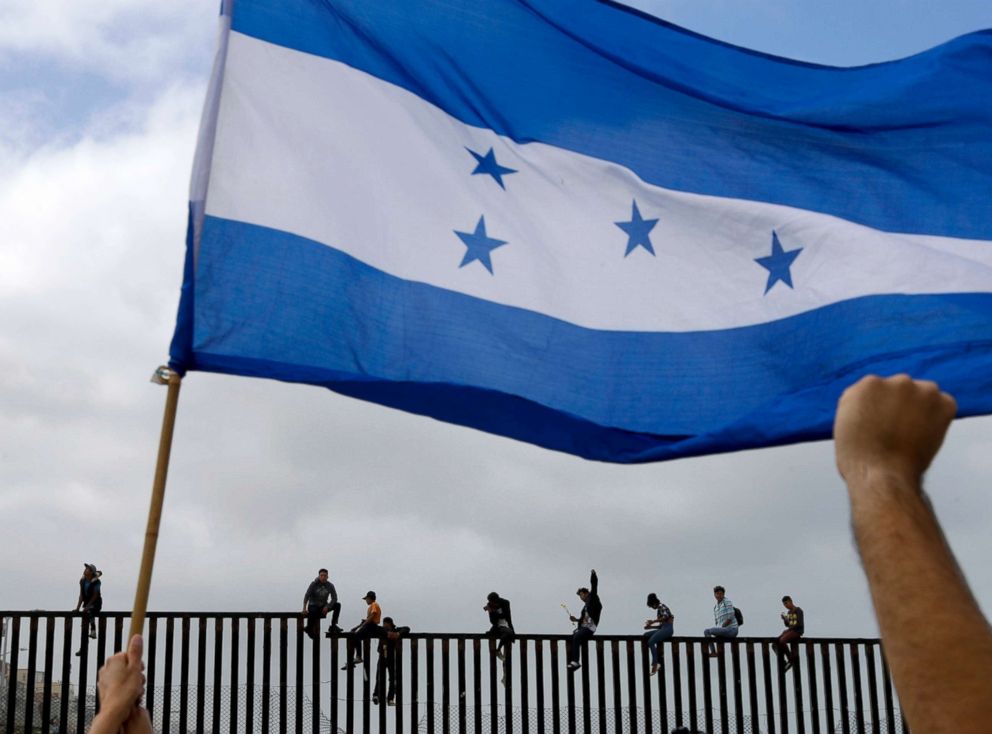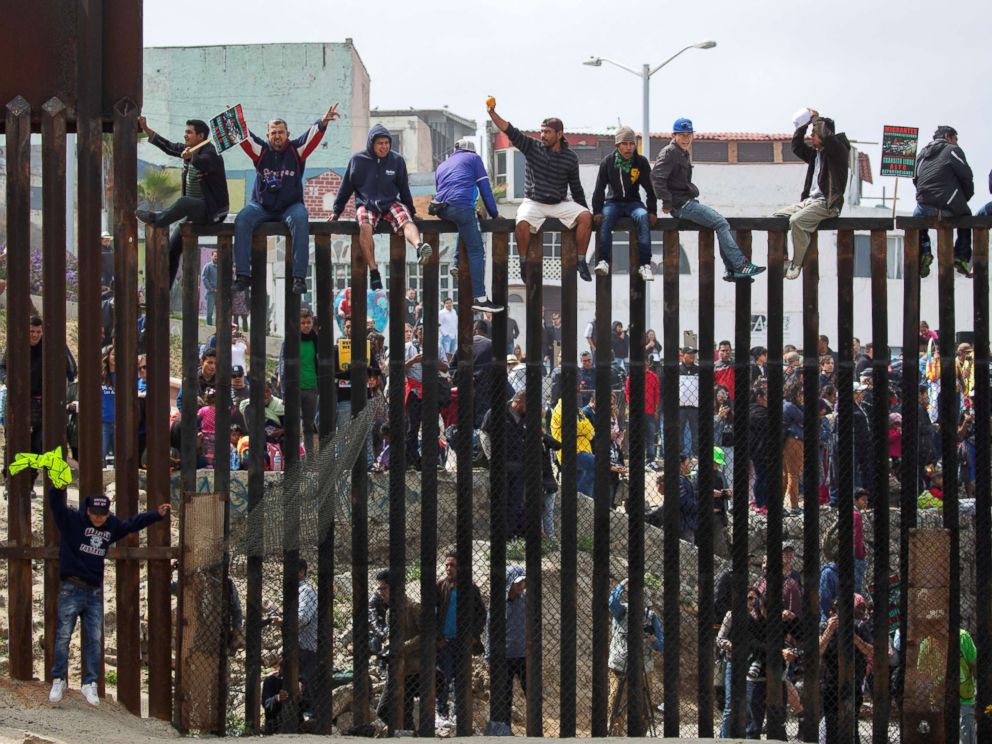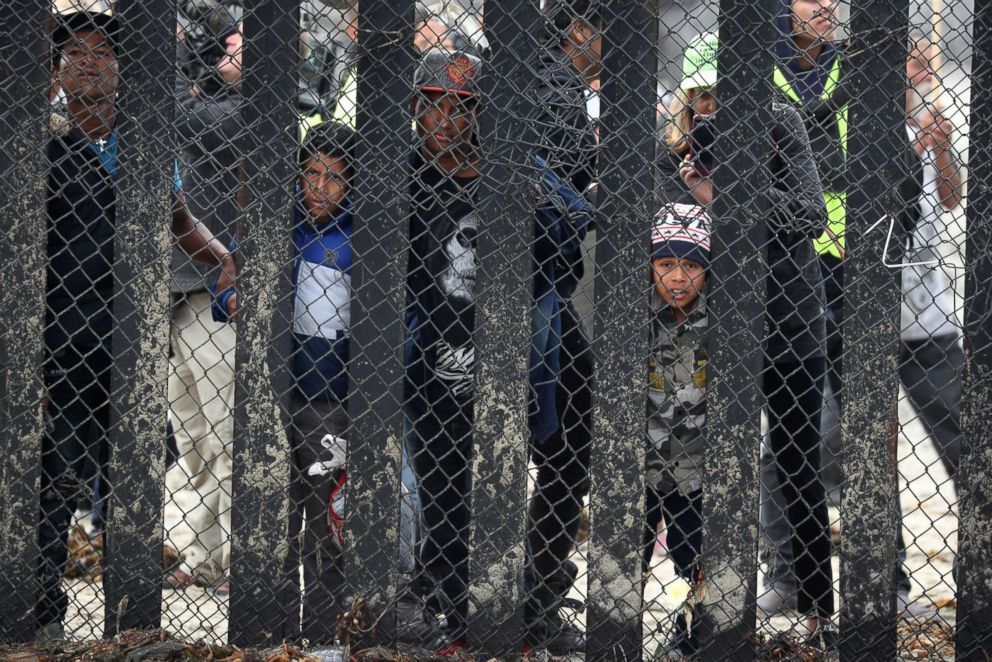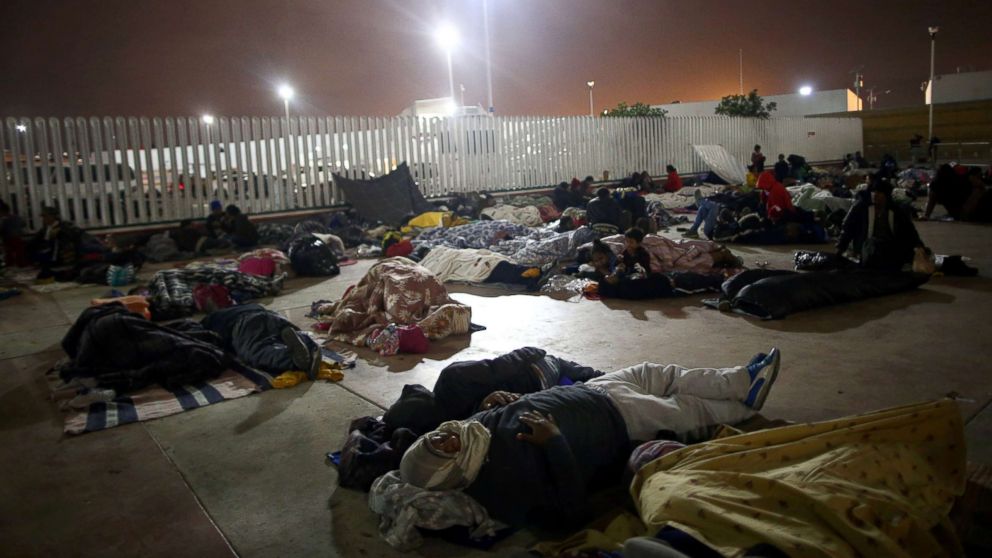[ad_1]
Upward of 100 people from Central America who traveled north in a so-called “migrant caravan” to seek asylum in the United States are waking up on the Mexican side of the border this morning.
Interested in Immigration?
Add Immigration as an interest to stay up to date on the latest Immigration news, video, and analysis from ABC News.
Organizers of the group told ABC News that there are about 100 people sleeping outside a port of entry in San Diego. They spent the night on threadbare blankets and mats on concrete ground.
The caravan that started in Honduras and traveled through Central America and Mexico for weeks is now stopped at the San Ysidro port of entry after arriving on Sunday.
As of Monday morning, none of the travelers have been processed by U.S. Customs and Border Protection.
Port of entry at ‘capacity’
On Sunday evening, Border Patrol commissioner Kevin McAleenan released a statement saying that the San Ysidro port of entry had “reached capacity.”
He suggested that could change but gave no timetable, saying that in the meantime “those individuals may need to wait in Mexico as CBP officers work to process those already within our facilities.”
“As sufficient space and resources become available, CBP officers will be able to take additional individuals into the port for processing,” McAleenan said in the statement.
 Chris Carlson/AP
Chris Carlson/APNot all of the migrants who were a part of the caravan stayed at near the port of entry overnight.
San Diego CBP patrol agent Rodney Scott released a statement Sunday afternoon saying that “several groups of people” climbed over a “dilapidated scrap metal border fence.”
“In several of these incidents, children as young as 4 years old, and in one case a pregnant female, were detected entering the United States illegally through a dark, treacherous canyon that is notorious for human and drug smuggling,” Scott said in the statement. “As a father myself, I find it unconscionable that anyone would expose a child to these dangerous conditions, especially when there is a legitimate port of entry within a few miles of these dangerous canyons,”
 David McNew/Getty Images
David McNew/Getty ImagesFluctuating size
The size of the caravan has changed over time. Before it was announced on Sunday that San Ysidro was at capacity, an attorney representing the caravan told ABC News that approximately 150 to 180 people — whom she said were mostly children — would present at the official port of entry and seek asylum that day.
Nearly 400 migrants — many of them mothers carrying infants and children — in old school buses arrived in Tijuana last week. Some secured pro bono legal counsel and have been staying in shelters in Tijuana near the U.S. border in San Diego.
 Mike Blake/Reuters
Mike Blake/ReutersPueblo Sin Fronteras, a group supporting the caravan, has said in a statement that the men, women and children in the group are seeking peace and “fighting for a safe and dignified life.”
Trump’s views
President Donald Trump has been openly critical of the caravan, most recently mentioning it during his rally on Saturday night in Michigan.
“Are you watching that mess that’s going on right now with the caravan coming up? Are you watching this and our laws are so weak, they’re, so pathetic,” he said.
Trump has tweeted about the caravan throughout the month, praising Mexico for help in dispersing some of the group and slamming “Democrat-inspired laws on sanctuary cities,” which he suggests appeal to prospective migrants to the U.S.
 Lucy Nicholson/Reuters
Lucy Nicholson/Reuters“The Caravan is largely broken up thanks to the strong immigration laws of Mexico and their willingness to use them so as not to cause a giant scene at our Border. Because of the Trump Administrations actions, Border crossings are at a still UNACCEPTABLE 46 year low. Stop drugs!” he wrote on April 5.
The Caravan is largely broken up thanks to the strong immigration laws of Mexico and their willingness to use them so as not to cause a giant scene at our Border. Because of the Trump Administrations actions, Border crossings are at a still UNACCEPTABLE 46 year low. Stop drugs!
— Donald J. Trump (@realDonaldTrump) April 5, 2018
“Despite the Democrat inspired laws on Sanctuary Cities and the Border being so bad and one sided, I have instructed the Secretary of Homeland Security not to let these large Caravans of people into our Country. It is a disgrace. We are the only Country in the World so naive! WALL,” he wrote on April 23.
Despite the Democrat inspired laws on Sanctuary Cities and the Border being so bad and one sided, I have instructed the Secretary of Homeland Security not to let these large Caravans of people into our Country. It is a disgrace. We are the only Country in the World so naive! WALL
— Donald J. Trump (@realDonaldTrump) April 23, 2018
While Trump will remain in Washington today, Vice President Mike Pence is to visit a different Border Patrol station in California and then attend an event in Los Angeles.
Legal next steps
While the San Ysidro port of entry may be viewed by some in the group as the destination, it is only the first step in the legal process for receiving refugee status.
Migrants seeking asylum in the U.S. aren’t admitted from that San Diego station, but are sent to detention centers elsewhere. That’s where they are given a “credible fear interview,” a battery of questions to determine if they would face persecution back home.
Then those who essentially pass that test would be fitted with a GPS monitor and allowed to join family in the U.S.
ABC News’ Matt Gutman and Robert Zepeda contributed to this report.
[ad_2]
Source link

